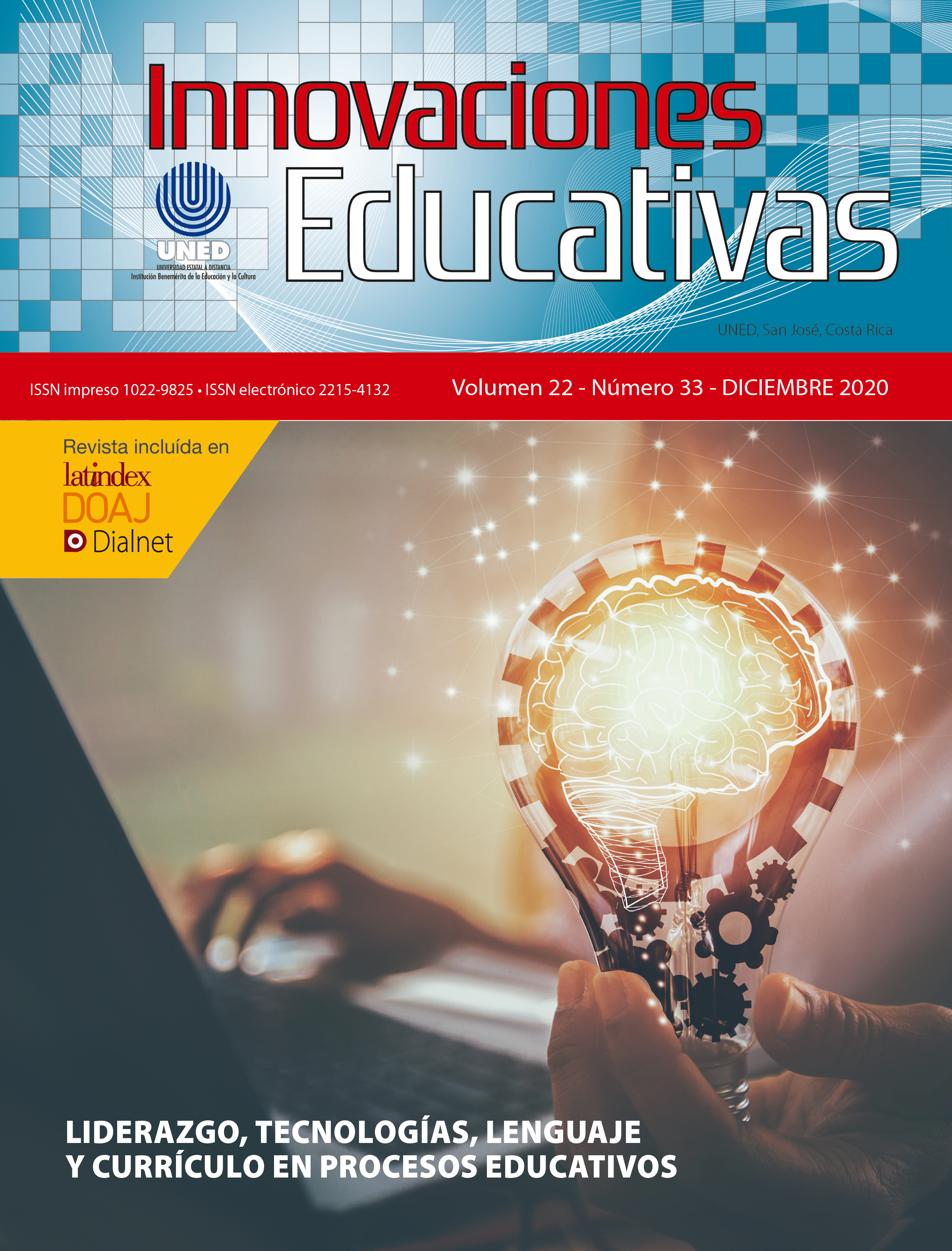Teaching and Administrative Staff’s, and Students’ perception on Teacher Evaluation in a Private University in Guatemala
DOI:
https://doi.org/10.22458/ie.v22i33.2764Keywords:
Teacher evaluation, teacher assessment, teacher valorization, education, higher educationAbstract
Teacher evaluation at the university level is a process that contributes to the improvement of educational quality. Since it is a complex task, different criteria must be taken into consideration. Also, different aspects such as observations, student’s opinions, colleague’s judgment, and peer review are involved. Students are a consistent source of information. However, since it is the only one, it poses advantages and disadvantages. This work’s main purpose was to get to know the impressions of the teaching and administrative staff and the students on Teacher Evaluation in a private university in Guatemala. By employing a qualitative approach, information was obtained through focus groups. An analysis of the comments’ emergent coding was also carried out, which generated the most important categories. The positive results indicate that, for the teaching staff, the evaluation means an opportunity for professional growth, the anonymity is valued as positive and also the fact that it is carried out online. On the other hand, there is a negative perception about the validity of the evaluation because of the number of participating students, their motivation when answering, and the use given to the results that will negatively impact the work environment. The participants’ general feeling leans towards the redefinition of the evaluation approach so that it is part of continuous improvement.
References
AAUP, A. A. (1975). Statement on Teaching Evaluation. Washington, D.C. Aleamoni, L. (1997). Student ratings of instruction. Handbook of teacher (55), 110-145.
Ayala Hernández, P. (2013). Factores que inciden en la evaluación del desempeño docente por los alumnos de nivel superior en la Universidad TecMilenio, campus Ciudad Juárez. Noésis. Revista de Ciencias Sociales y Humanidades, 22(43), 188-224. Recuperado de http://www.redalyc.org/articulo.oa?id=85927874018
Berk, R. (2005). Survey of 12 strategies to measure teaching effectiveness. International Journal of Teaching and Learning in Higher Education, 17(1), 48-62. Recuperado de http://www.isetl.org/ijtlhe/pdf/IJTLHE8.pdf
Braga, M., Paccagnella, M., y Pellizzari, M. (2014). Evaluating students’ evaluations of professors. Economics of Education Review- ELSEVIER (41), 71-88. doi.org/10.1016/j.econedurev.2014.04.002
Brown, M. J. (2008). Student Perceptions of Teaching Evaluations. Journal of Instructional, 35(2), 177-181. Recuperado de https://eric.ed.gov/?id=EJ813321
Bruns, B., y Luque, J. (2014). Docentes excelentes, Cómo mejorar el aprendizaje en América Latina y el Caribe. Washington, DC: Banco Mundial. Recuperado de https://openknowledge. worldbank.org/bitstream/handle/10986/20488/Spanish-excellent-teachers-report.pdf
Campos Ríos, G. (2009). La evaluación de los docentes en educación superior. Asunto en manos de los happy few. Revista Iberoamericana De Educación, 49(5), 1-9. Recuperado de https://rieoei.org/RIE/article/view/2064
Cano-Hurtado, J., Carot-Sierra, J., Fernández-Padra, M., y Fargueta, F. (2006). An Evaluation Model of the Teaching Activity of Academic Staff. Organization for Economic Cooperation and Development (OECD) Recuperado de http://www.oecd.org/education/imhe/43977296.pdf
Cohen, P. (1990). Effectiveness of student-rating feedback for improving college. Res Higher Educ (13), 321-341. https://doi.org/10.1007/BF00976252
Creswell, J. (2013). Research design: Qualitative, quantitative y mixed methods approaches. 4th Ed. Sage Publications: Thousand Oaks, CA.
Davidovitch, N., y Soen, D. (2001). Student Surveys and Their Applications in Promoting Academic Quality in Higher Education. Journal of College Teaching and Learning, 8(6), 31-46. https://doi.org/10.19030/tlc.v8i6.4277
Espinoza, O., y González, L. E. (2010). Evaluación de Desempeño en la Educación Superior: Un modelo de Análisis. Universidad UCINF, Centro de Investigaciones en Educación, Santiago de Chile.
González, J. S. (2003). Modelos, procedimientos e instrumentos de evaluación de la actividad docente. Educación Médica, 6(3), 32-33. Recuperado de http://scielo.isciii.es/pdf/edu/v6n3/ponenciaiv_1.pdf
Guemes García, C., y Loredo Enríquez, J. (2008). Los procesos de evaluación del desempeño docente en el nivel medio superior: una perspectiva de mejora continua. México: UNAM.
Herrera, R. (2004). Modelo Pedagógico Para la Incorporación de TICs en Educación Superior. MOTIC ADECCA.
Jaik Dipp, A., Villanueva Gutierrez, R., García Salas, M. E., y Tena Flores, J. A. (2011). Valoración del desempeño Docente y presencia de Burnout en maestros de Educación Superior. Revista Electrónica Diálogos Educativos (21), 2-80. Recuperado de https://dialnet.unirioja.es/servlet/articulo?codigo=3931314
Jiménez Moreno, J. A. (2008). Cuatro modelos de evaluación docente. PsicoPediaHoy, 10(9) Recuperado de http://psicopediahoy.com/evaluacion-docente-cuatro-modelos/
Krueger, R. y Casey, M. (2015). Focus groups: A practical guide for applied research. Sage Publications: Thousand Oaks, CA.
Marsh, H. (1984). Students’ evaluations of university teaching: dimensionality, reliability, validity, potential biases and utility. Journal Educ Psychol. 5(76), 707-754. Recuperado de https://www.wittenberg.edu/sites/default/files/media/faculty/Marsh1984.pdf
Mazón Ramírez, J. J., Martínez Stack, J., y Martínez González, A. (2011). La evaluación de la función docente mediante la opinión del estudiante. Nuevo instrumento para nuevas dimensiones: COED. Revista de la educación superior, XXXVIII(1) (149), 113-139. Recuperado de http://www.redalyc.org/pdf/604/60416041006.pdf
Patton, M. (2016). Qualitative research and evaluation methods. 4th Ed. Sage Publications: Thousand Oaks, CA.
Rindermann, H., y Schofield, N. (2001). Generalizability of Multidimensional Student Ratings of University Instruction Across Courses and Teachers. Research in Higher Education, 42(4), 377-399. https://doi.org/10.1023/A:1011050724796
Rueda Beltrán, M. y Luna Serrano, E. (2008). Introducción: La docencia universitaria y su evaluación. Revista Electrónica de Investigación Educativa, Especial -REDIE-. Recuperado de https://redie.uabc.mx/redie/article/view/195/1279
Stark, P. B., y Freishtat, R. (2014). An evaluation of course evaluations. ScienceOpen Research. DOI: 10.14293/S2199-1006.1.SOR-EDU.AOFRQA.v1
Wilfrid, M. (2012). Student Evaluations of Teaching Effectiveness: Considerations for Ontario Universities. Ontario, Canada. Recuperado de https://cou.ca/wp-content/uploads/2015/07/Academic-Colleagues-Paper-Student-Evaluations-of-Teaching-Effectiveness.pdf
Yin Fah, B. C., y Osman, S. (February de 2011). A Case Study of Student Evaluation of Teaching in University. International Education Studies, 4(1), 44-50. Recuperado de https://files.eric.ed.gov/fulltext/EJ1066372.pdf

